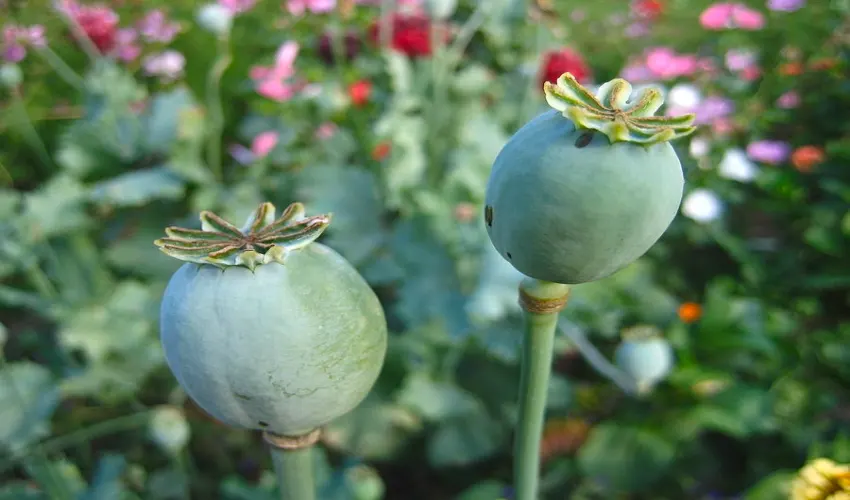
How Long Do Poppy Pods Last After Harvesting
Poppy pods, derived from the Papaver somniferum plant, are valued for their striking appearance and versatility. They are often used in floral arrangements, crafts, and as natural elements in interior design. However, one common question among gardeners, florists, and hobbyists is: how long do poppy pods last after harvesting? The answer depends on several factors, including the condition of the pods when harvested and how they are stored. In this article, we will explore the lifespan of poppy pods after harvesting, tips for prolonging their freshness, and ways to use them effectively.
The Lifespan of Poppy Pods
Poppy pods are best harvested when they have fully matured. At this stage, the pods are typically green, and the seeds inside are still developing. Once the pods turn brown and dry, it’s time to collect them. At this point, the poppy pods are most durable, but their longevity varies based on environmental conditions and storage methods.
On average, dried papaver somniferum pods can last anywhere from several months to up to two years. However, this timeframe can be shortened if the pods are not stored properly. In optimal conditions, dried poppy pods can retain their shape, color, and texture for a longer period, making them a popular choice for decorative purposes.
Factors Affecting the Longevity of Poppy Pods
Several key factors can influence how long poppy pods last after harvesting. These include:
- Harvesting Time: Poppy pods should be harvested when they are fully matured and dry. Pods that are harvested too early may not last as long because they may not be fully developed and may continue to dehydrate after being picked.
- Storage Conditions: Storing poppy pods in a dry, cool, and dark place is crucial for maintaining their longevity. Exposure to moisture can cause mold and decay, while excessive sunlight can lead to fading. If the pods are stored in airtight containers or sealed bags, they will last longer by preventing exposure to the elements.
- Climate and Environment: The local climate can also impact how long poppy pods last. Humid or damp environments can accelerate degradation, while dry climates are more favorable for preserving the quality of poppy pods.
How to Extend the Life of Poppy Pods
To ensure that your poppy pods last as long as possible, it is important to follow proper storage techniques. Here are some tips for preserving the quality of your harvested poppy pods:
- Dry the Pods Thoroughly: After harvesting, make sure to dry the poppy pods completely. Hang them upside down in a well-ventilated area, away from direct sunlight. This process helps to remove any remaining moisture from the pods, preventing mold growth.
- Store in an Airtight Container: Once the pods are fully dried, place them in a sealed container or bag to protect them from humidity, insects, and dust. A clear, plastic storage box with a lid is an ideal choice as it allows you to monitor the condition of the pods without opening the container frequently.
- Avoid Exposure to Direct Sunlight: Sunlight can cause poppy pods to fade and lose their vibrant color. Store them in a dark location, such as a closet or cupboard, to preserve their appearance over time.
- Control Temperature and Humidity: The best storage conditions for poppy pods are cool, dry, and well-ventilated areas. Avoid storing them in damp spaces such as basements or bathrooms, as this can lead to mold growth.
- Check Regularly for Signs of Damage: Even under optimal conditions, poppy pods can deteriorate over time. Periodically check your stored pods for any signs of mold, discoloration, or pests. Discard any pods that show signs of deterioration to prevent them from affecting the rest of the collection.
Creative Uses for Poppy Pods
Beyond their decorative value, poppy pods have many uses that can make them last even longer. Whether for crafting, aromatherapy, or as a natural addition to a garden, these versatile pods have a wide range of applications.
- Floral Arrangements: Dried poppy pods are frequently used in bouquets and floral displays. Their unique shape and texture add an interesting element to any arrangement, and since they last a long time, they can be reused in multiple displays.
- Craft Projects: Poppy pods are popular in crafting, particularly in making wreaths, centerpieces, and other decorative items. By incorporating other dried flowers, branches, and seeds, poppy pods can contribute to a rustic, natural look.
- Aromatherapy: The pods of poppies can be used in potpourri mixes or scented sachets. Although they do not emit a strong fragrance of their own, when paired with essential oils or dried flowers, they can create a soothing and calming atmosphere.
- Garden Decoration: Poppy pods can also serve as a striking addition to garden decorations, either as a standalone feature or as part of a larger design. Their unique appearance makes them a conversation starter in outdoor spaces.
Conclusion
The lifespan of poppy pods after harvesting depends largely on the care they receive during and after the harvesting process. With proper drying, storage, and maintenance, poppy pods can last from several months to up to two years. By following the tips outlined above, you can ensure that your poppy pods stay in pristine condition for longer, allowing you to enjoy their beauty and versatility in various creative projects. Whether for use in floral arrangements, crafts, or as garden decor, poppy pods offer a timeless touch to any space.